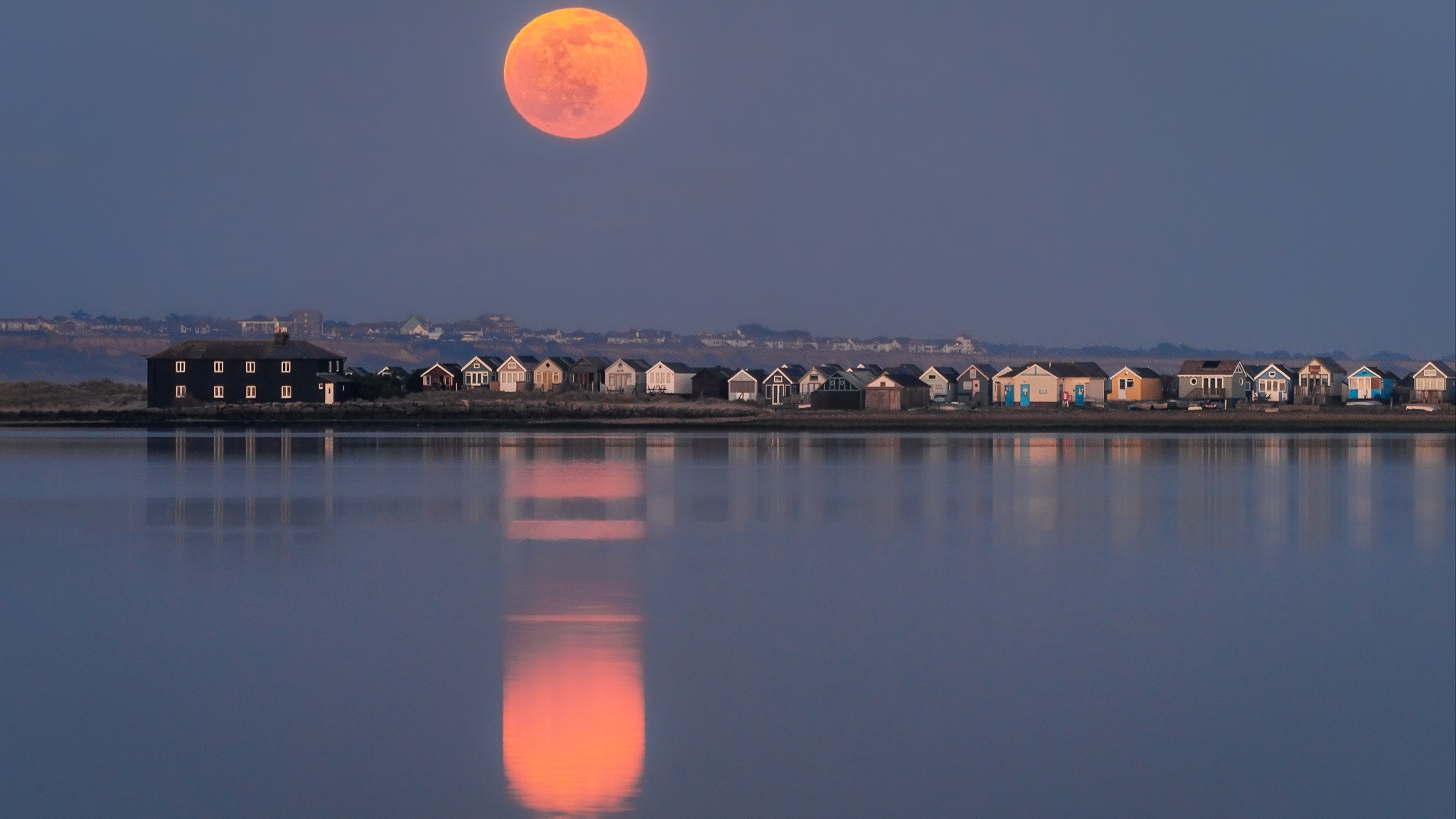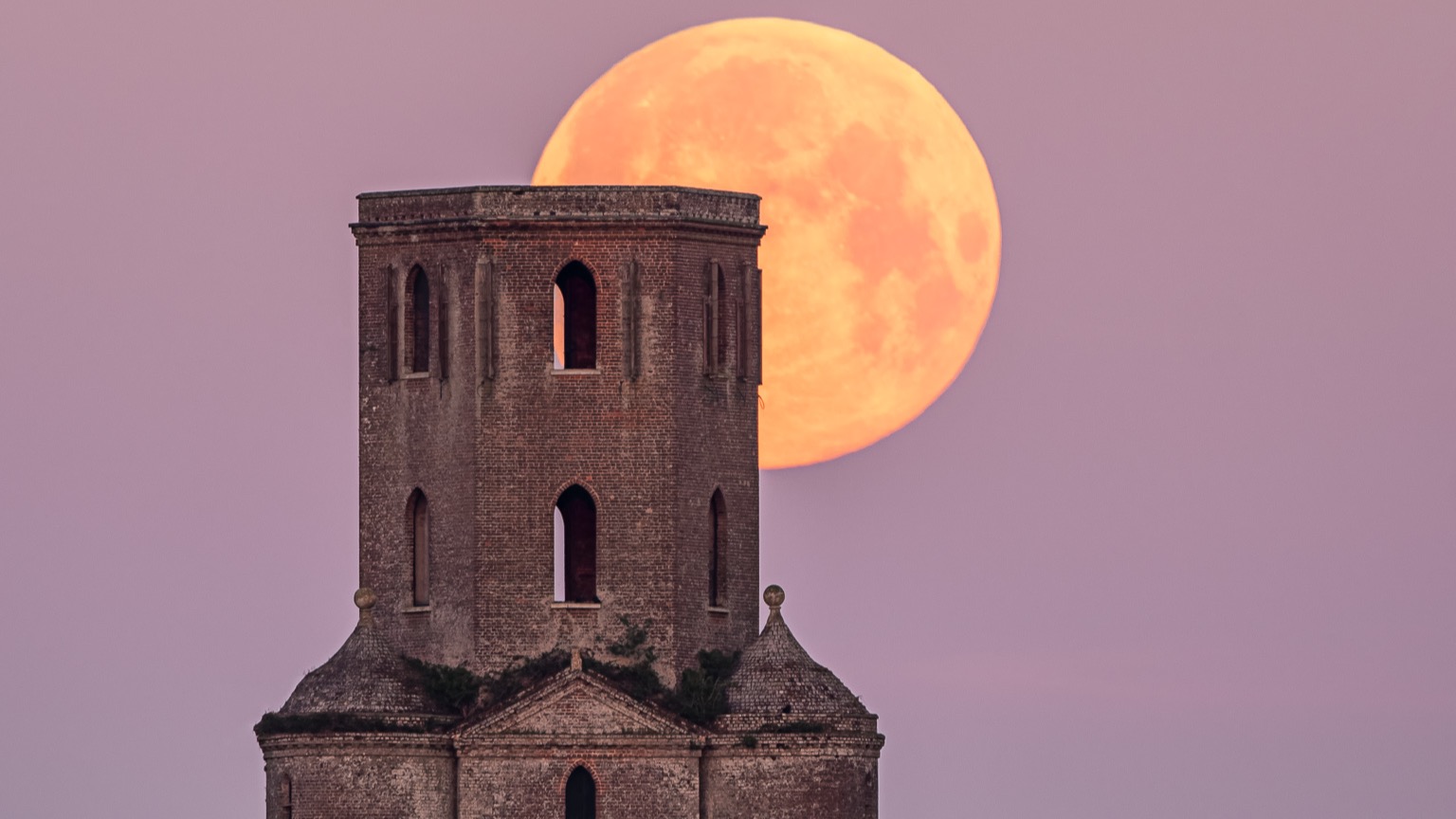Supermoon alert: The last supermoon of the year rises tonight!
August's dazzling full moon known as the Sturgeon Moon will shine bright tonight (Aug. 11).

The full moon of August, known as the Sturgeon Moon, will occur tonight (Aug. 11) at approximately 9:36 p.m. EDT and 6:36 p.m. PDT (Friday at 01:36 GMT).
It will occur when the moon is within 90% of its closest approach to Earth making it a "supermoon" according to Fred Espanak eclipse expert and retired NASA astrophysicist.
We have already witnessed three supermoons this year in May, June and July with August's supermoon wrapping things up with the last supermoon of the year. Surprisingly, supermoon streaks like the one we've seen this year are not particularly uncommon. Per Espanak's website, 2023 will also see four consecutive full supermoons, as will 2024. Even 2025 has three in a row.
Unfortunately for meteor shower enthusiasts, the full moon will coincide with the peak of the Perseid meteor shower, upstaging and outshining many of the fainter meteors. Usually, observers in North America could expect to see between 50 and 60 meteors per hour however the full moon will reduce the visibility of meteors to about 10-20 per hour at most according to a statement from NASA.
Related: The brightest planets in August's night sky: How to see them (and when)
That being said, there is still plenty to look out for tonight as some Perseid meteors may still be visible. Also, the Sturgeon supermoon will shine about a slim palm's width to the lower right (or 5 degrees to the celestial south) of Saturn, according to astronomer Chris Vaughan of Astrogeo.ca, who prepares Space.com's monthly Night Sky calendar in cooperation with Simulation Curriculum.
A supermoon will appear as much as 30% brighter and 14% larger than usual, and while this may sound like a lot, it's very hard to spot such a difference with the naked eye. But the supermoon may appear especially large to you if it is close to the horizon in a phenomenon known as the "moon illusion."
Get the Space.com Newsletter
Breaking space news, the latest updates on rocket launches, skywatching events and more!

Despite what you may think you see, the moon's width remains the same whether it's sitting low near the horizon or high in the sky. According to NASA this lunar deception may be caused by the brain comparing the moon to nearby buildings or objects, or perhaps it is just wired to process things on the horizon as bigger than things in the sky. Either way, it's all an illusion but one that makes for a fabulous photo subject.
Want to capture the perfect supermoon photo? Our guide on How to compose the perfect supermoon photograph will give you some tips and tricks on the best camera settings, how to plan your composition and which equipment to use.

Looking for a telescope for the next stargazing event? We recommend the Celestron Astro Fi 102 as the top pick in our best beginner's telescope guide.
If you're looking for a telescope or binoculars to observe the last supermoon of the year, our guides for the best binoculars deals and the best telescope deals now can help but bear in mind that during a full moon, the moon and sun are opposite each other and sunlight strikes the moon face-on. As such, it can be tricky to make out particular features on the lunar surface in detail due to the lack of shadows.
Editor's Note: If you snap a photo of the Sturgeon supermoon and would like to share it with Space.com's readers, send your photo(s), comments, and your name and location to spacephotos@space.com.
This article was updated on Aug 11 to fix a typo in the opening paragraph.
Follow us on Twitter @Spacedotcom and Facebook.
Join our Space Forums to keep talking space on the latest missions, night sky and more! And if you have a news tip, correction or comment, let us know at: community@space.com.

Daisy Dobrijevic joined Space.com in February 2022 having previously worked for our sister publication All About Space magazine as a staff writer. Before joining us, Daisy completed an editorial internship with the BBC Sky at Night Magazine and worked at the National Space Centre in Leicester, U.K., where she enjoyed communicating space science to the public. In 2021, Daisy completed a PhD in plant physiology and also holds a Master's in Environmental Science, she is currently based in Nottingham, U.K. Daisy is passionate about all things space, with a penchant for solar activity and space weather. She has a strong interest in astrotourism and loves nothing more than a good northern lights chase!









